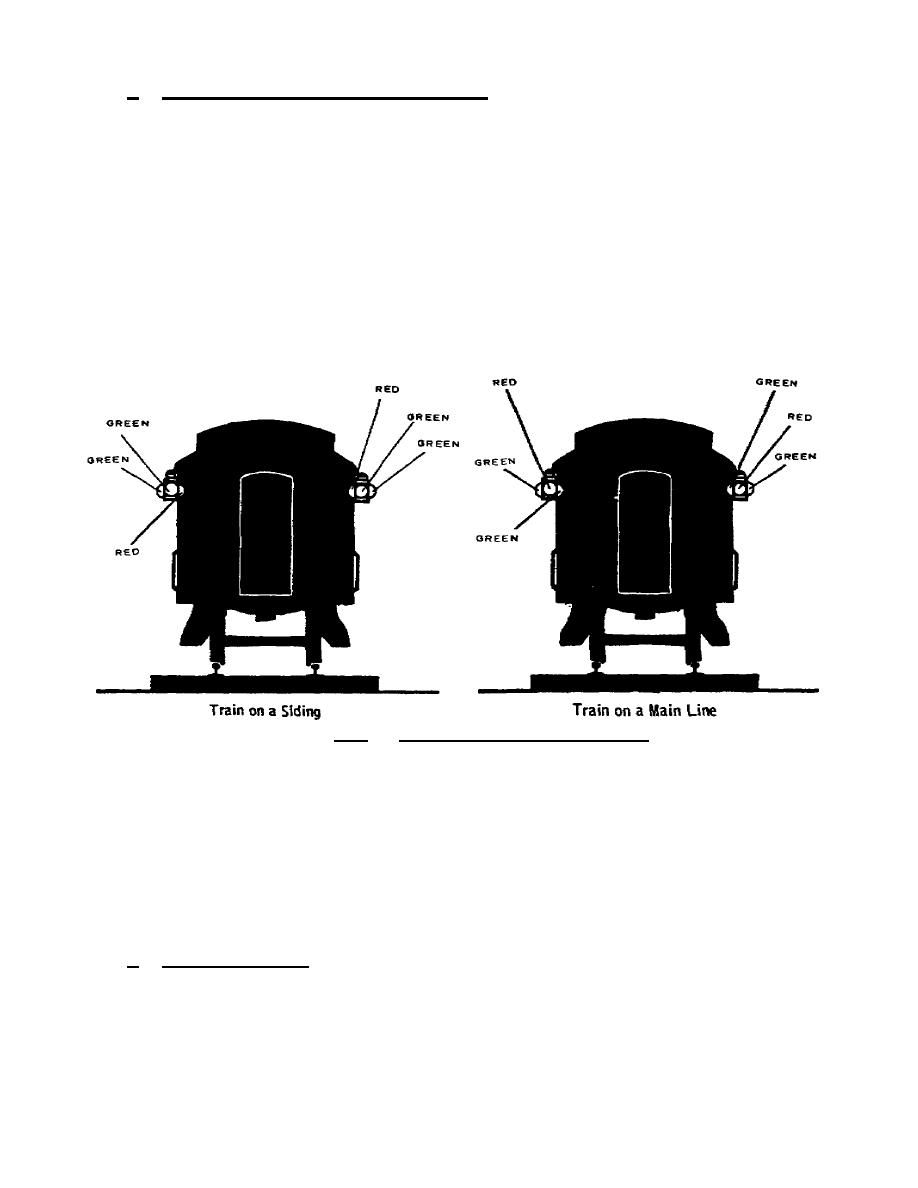
b. Markers on the rear of trains. Markers are displayed on the
rear of all trains. Because train operation in a theater usually
takes place on singletrack main lines, the discussion of train
markers is confined to singletrack operation. The markers, shown in
figure 2. 7, are red and green flags used by day and red and green
lights by night. When red lights are displayed on the rear, it means
that the main track is obstructed. A following train must approach
at reduced speed. When a train is in the siding clear of the main
track with the switch lined for a through main line movement, it
displays green flags by day and, in addition, green lights by night
on the last car of the train. A single engine authorized by train
order to run as an extra train must display white classification
signals on the front of the engine and markers on the rear.
Figure 2.7. Rear Markers for Trains.
2.16. FIXED SIGNALS
In chapter 1, fixed signals are defined as any signals of fixed
location that affect the movement of a train or engine. They may be
many sizes and shapes, but three basic fixed signals are commonly
found: semaphore, color light, and position light. Aspects of fixed
signals are shown by the position of semaphore arms, color of lights,
position of lights, or a combination of color and position of lights.
a. The semaphore, shown in figure 2.8, consists of an arm or
Made, secured by a movable mechanism to a vertical pole or mast.
When the arm is straight up, in a vertical position, a train
41



 Previous Page
Previous Page
